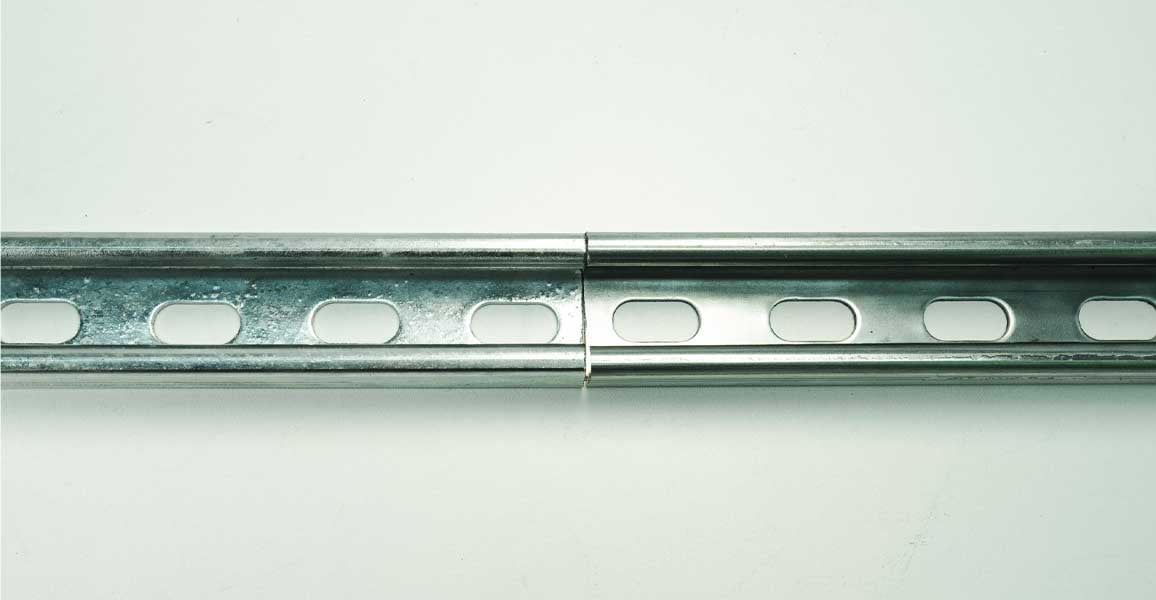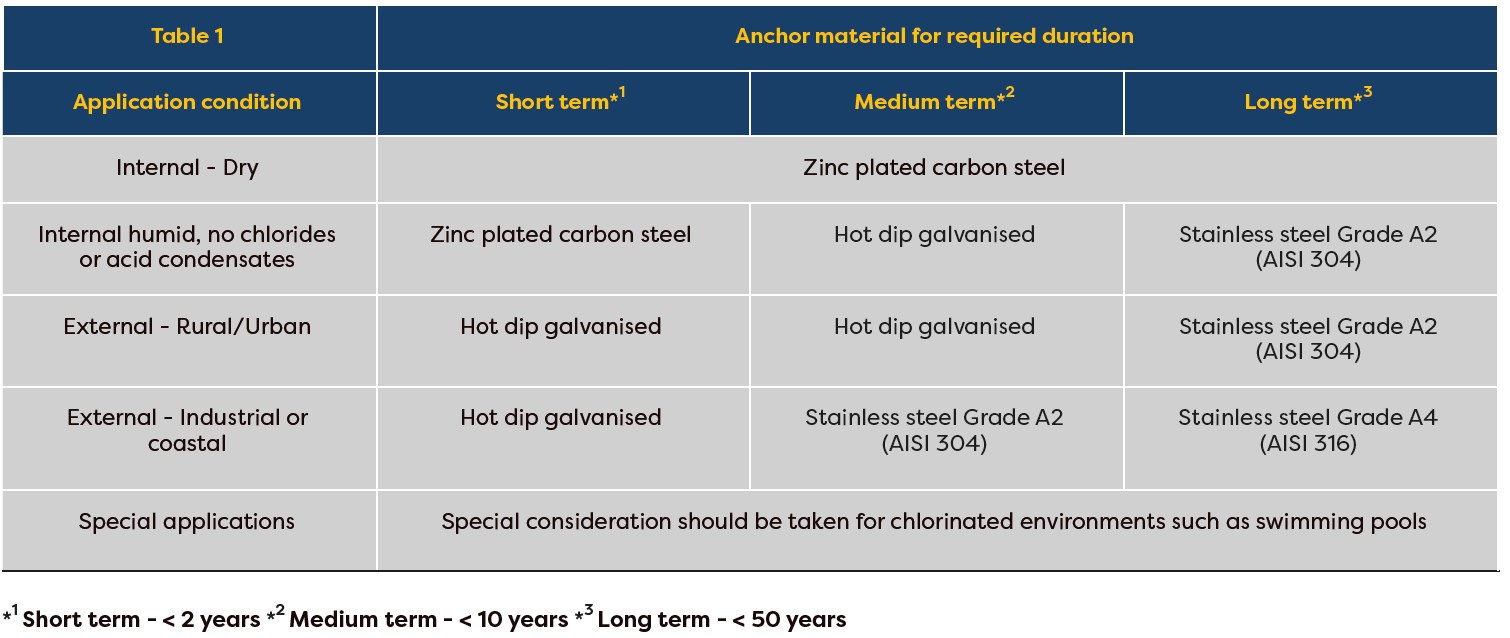Whether you notice it or not, galvanizing plays a huge part in all of our lives, be it directly or indirectly. And this is particularly true if you’re in the M&E industry (seeing as you’re on this page, I’m assuming you are!).
But it’s still true otherwise. You are constantly walking past lampposts, fences, brackets, security products, and drain products; all of which are usually galvanized, even if it’s not obvious due to a powder coating.
Having said that, there still seems to be some confusion in our sector around the terms ‘hot dip galvanized’ and ‘pre-galvanized’, and when either of which would be suitable (in which applications), despite the presence of a harmonized standard around this topic (ISO 1461).
Our aim is to make this clearer for anyone reading this article. It will cover the following:
- What is galvanizing?
- What does ‘pre-galvanized’ mean?
- What does ‘hot dip galvanized’ mean?
- Why is galvanizing necessary for M&E supports?
- How is galvanizing relevant to anchors and fixings?
- Conclusion
What is galvanizing?
Galvanizing is the process of applying a protective zinc coating to iron steel to prevent rusting. According to the Galvanizers Association, when clean steel is dipped into molten zinc, multiple zinc-iron alloy layers are formed by a metallurgical reaction between the iron and zinc, providing a robust coating which is an integral part of the steel.
There are two main ways that something can be galvanized; either pre-galvanized or hot-dip galvanized.
What does ‘pre-galvanized’ mean?
As an M&E contractor, you surely will have heard the term ‘pre-galvanised’ frequently. M&E products such as channel can often be bought ‘pre-galvanized’, meaning the steel that it is made from is already galvanized coating it with roughly 20 microns of zinc.
This is the standard product for indoor environments, so depending on your intended purpose, this might be enough protection. The edges and ends are uncoated, but they don’t need to be, thanks to something called cathodic corrosion protection. This is when the zinc coating protects even the uncoated parts, to an extent, because of the proximity. Don’t ask how it works, but it does!
However, although pre-galvanized products look aesthetically pleasing, they only contain a small amount of zinc so for certain environments, their corrosion-protection levels may not be sufficient. They are sometimes requested when there’s a limited understanding of galvanizing, and the slightly misleading name doesn’t help! That brings us to the next point…
What does ‘hot-dip galvanized’ mean?
In contrast, the more protective option is a hot-dip galvanized coating; this is when you get something galvanized after manufacture. Hot-dip galvanizing gives a thicker zinc coating of at least 55 microns, and coats all the edges.
This is typically used in external applications (up to C4 corrosion classification) where that extra level of corrosion protection is needed; although it is still also used indoors. But when dealing with steel in an outdoor environment, if you want to prolong its lifespan, you should definitely get it hot-dip galvanized.
When cutting a length of hot-dip galvanized channel, it’s important to protect the ends with a suitable zinc-rich paint. This can be applied using a brush, or more often with aerosol paint. Just keep in mind when selecting paint that the corrosion protection levels of it will vary from make to make, depending on the zinc content of the paint.
Why is galvanizing necessary for M&E supports?
The whole purpose of galvanizing is to provide barrier protection between all internal and external steel surfaces and their environment. How it works is that the zinc corrodes in preference to steel and sacrifices itself to protect the steel, so to speak.
Hot dip galvanizing gives complete corrosion protection for a very long time, especially when compared to other things. An average coating thickness of 85 microns, the same thickness as a sheet of A4 paper, can protect a steel structure for the better part of 100 years (ref). In fact, a galvanized coating is one of the most durable forms of corrosion protection on the market.
 (Pre-galvanized vs hot dip galvanized finish)
(Pre-galvanized vs hot dip galvanized finish)
Not only that, but galvanizing offers 3-way protection. The first of which is the physical barrier which prevents the steel from being exposed to atmospheric conditions. The coating is extremely durable and will allow for much slower weathering.
The second is sacrificial/cathodic protection. This is when the zinc coating will ‘sacrifice’ itself, so to speak, before letting the steel be compromised (this naturally happens thanks to the chemical reactions). What that means is, if the galvanized surface gets a scratch or two, you don’t have to worry or do any repair work because of its proximity to zinc, even in corrosive environments.
The amazing thing is that all this durability surprisingly comes with little environmental costs and doesn’t use up much energy. When something like a steel structure isn’t galvanized, the costs of maintaining it long-term are much more damaging than the initial costs of corrosion protection. If you do galvanize it, you don’t have to mess with it for many years after the fact – you can just leave it alone. So, not only is galvanizing sustainable, but it’s also cost-effective.
Sometimes, individuals might expect a chrome or stainless steel finish with galvanized products – but they shouldn’t. Because of the chemistry behind it, the coating naturally won’t be as uniform as chrome and stainless steel. If this is a deal-breaker, a powder coating is worth thinking about; however, contrary to popular belief, it doesn’t do much in the way of corrosion protection.
For that, you’ll still need galvanization. Some people think it’s a lot more expensive than it actually is, but in reality, if you weigh up the lifespan with the cost of galvanizing, it seems insignificant, especially relative to the entire cost of the project. Stainless steel and powder coating are both more expensive, so galvanizing alone seems much more reasonable when looking at how protective it really is.
Of course, it should also be expected that the life expectancy of steel after galvanizing will depend on environmental factors. For example, installing a fence in a dry inland area means it will react differently than if you were to install it by the sea, in a coastal environment. So, that’s something to keep in mind.
Nevertheless, it’s the most reliable form of corrosion protection so you’ll always be better off galvanizing than not. Plus, there’s substantial guidance out there, namely the EN ISO 1461 ‘Hot dip galvanized coatings on iron and steel articles – specification and test methods’.
It tells all galvanizers exactly how much zinc they need to put on each product, based on the thickness of the said product to enable it to last for (x) amount of years. This also means lifespans are easily predictable and relied upon.
Besides, it’s quite a straightforward and well-controlled process; that plus the fact that it’s governed by the standard means not much room for error (provided it’s being done by competent individuals).
How is galvanizing relevant to anchors and fixings?
Well, the same principles that apply to M&E components such as channel or cable basket also apply to anchors. That is that the environment is largely what determines whether they need to be coated i.e. hot dip galvanized or not, or even made of stainless steel.
The table below summarizes succinctly what coating the anchor should have depending on the environment and intended duration:

In the above summary table "External" applications involve normal conditions with no exceptional pollutants - Source - Construction Fixing Association (CFA).
Conclusion
The requirement for galvanizing is no doubt going to become more prevalent as we being to follow a stricter regime in construction. Frankly, why wouldn’t it? It provides incredible durability, and at relatively low environmental and monetary costs.
If something has been a tried, tested and true method for quite literally hundreds of years, there must be a reason, right?! (Or multiple, as we highlighted above😆).
The truth is that in M&E, many applications are outdoors and in corrosive environments, so at some point or another, you’ll have to (if you haven’t already) deal with galvanizing. Why not do it right, and at the lowest cost possible? Check out the ISO standard for guidance.
References:
- Galvanizers Association. n.d. Galvanizing Process UK Ireland. <https://www.galvanizing.org.uk/galvanizing-process/>
- Galvanizers Association n.d. EN ISO 1461 - British Galvanizing Standard. <https://www.galvanizing.org.uk/galvanizing-standards/iso-1461/>

-1.jpg?width=451&height=381&name=MicrosoftTeams-image-(576)-1.jpg)
